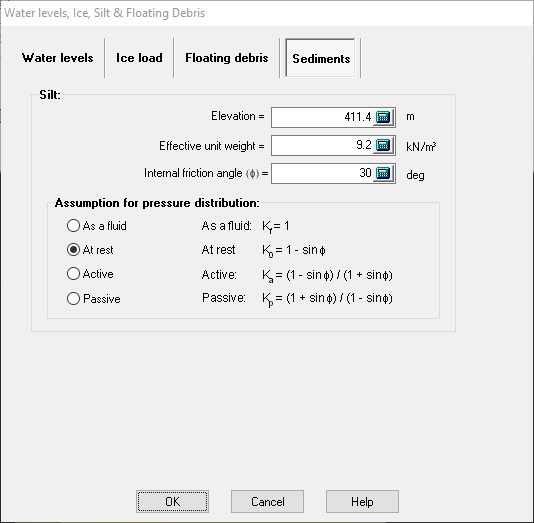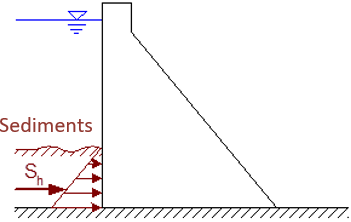Sediments
The Sediments tab (Figure 124) defines the thrust of sediments on the upstream face of the structure.

Figure 124
If sediments are considered as a fluid, the internal friction angle is not used to determine the exerted thrust on the dam. However, if the pressure distribution corresponds to a sediment that is active, passive or at rest, the internal friction angle is considered in the evaluation of the sediment thrust. This thrust is modified using the coefficient K.
For static loading conditions, the horizontal thrust of the submerged sediment deposited on the upstream face (Figure 197) is calculated using:
![]()

Figure 197 Triangular silt pressure distribution
K = Thrust coefficient Fluid ![]()
At rest ![]()
Active ![]()
Passive ![]()
γ's = Unit weight of submerged sediments (γ's = γsaturated sediment - γwater)
hsediments = Depth of sediments
ϕ = Internal friction angle
Along a sloping face, a vertical component of sediment forces is also calculated from the submerged weight of the sediment acting on the sloping face. Since the hydrostatic pressure is applied down to the base of the structure, it is appropriate to consider just the additional pressure caused by the sediment using the submerged weight.